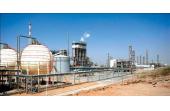The Mausoleum Of Xixia Dynasty
- Things to do
-
- Photo(12)
- Tips&article(2)
- Make it Happen
- Map
-
loading...
Location
The Mausoleum of Xixia dynasty is located in the east of the Helan Mountain, about 35 kilometers away from the urban area.
Characteristic
The Mausoleum of Xixia dynasty is known as the Oriental Pyramid. It is one of the largest existing Emperor Mausoleums in China. At the same time, it is also one of the best-preserved Emperor Mausoleums in China.
Brief Introduction:
The Mausoleum of Xixia dynasty is also called Xixia Mausoleum or Xixia Emperor Mausoleum. It is the mausoleum of the emperors through Xixia history. It is 10 kilometers from south to north and 4 kilometers from east to west. There are 9 Emperor mausoleums and more than 140 tombs of princes and ministers. The Mausoleum of Xixia dynasty covers an area of nearly 50 square kilometers. As it was influenced by the Buddhist architecture, the style of the Mausoleum is a combination of the Han culture, Buddhist culture and the Tangut culture. It is unique in style among Mausoleums in China.
Each mausoleum is a complete architectural complex. There are corn towers at the four corners. In the Mausoleum, there are watchtowers, pavilions, outer city, inner city, Xiandian and Lingtai (places where sacrifices are offered to gods or ancestors). The Mausoleum is surrounded by the God Walls and covers an area of more than 100,000 square meters. Although the Mausoleum was destroyed by the Yuan dynasty, scientists still excavated a large number of decorations, china and other funerary objects.
Above the Mausoleum, there is a sloping tomb passage which is more than 40 meters long. The Mausoleum was buried about 25 meters deep underground. Unlike those traditional Chinese Emperor mausoleums, the outside walls of this Mausoleum are not brick and the top of this Mausoleum is mound, fish spine in shape.
Before it was destroyed, the Lingtai was more than 20 meters high and it should be tower structure. This unique structure made the Xixia Mausoleum full of mystery. The Lingtai remained looks like a big honeycomb toppling down to the ground. The Mausoleum is so spectacular, especially against the nearby Helan Mountain which is pure in color.
At the north of the Mausoleum, a wax museum was built in a courtyard. The statues and pictures in the museum give travelers a vivid description of the history of Xixia. At the east of the wax museum, there is a Xixia Exhibition Hall. It has two stories. Exhibits in the Hall represent the splendid culture of Xixia dynasty.
At present, there are only two mausoleums open to public. They are the Haowang Mausoleum and the Shuang Mausoleum. In order to represent the sights of those ancient days, many acoustic and optical devices are equipped. At night, the yellow light and the blue light come from the devices on the ground cast on the Lingtai, Corn Tower and the Gold walls.
It looks like a fairy world. Tourists can take the carriage to enter the Mausoleum from the east side. In the Mausoleum, tourists can visit the Mausoleum Site and see the “King of Xixia” movie or other movies which introduce the history of Xixia. Moreover, tourists can also visit the Xixia Museum, Xixia Art Museum, Xixia Collection of stone inscriptions and other sites that tell the history and culture of Xixia.
Transportation:
Tourists can take the city bus line 1, 2, 4 and 18 and get off at the railway station. Then tourists can charter a car to reach there. The price for chartering a car is around 30 Yuan to 40 Yuan.
Yinchuan Tourism Bus Station (North Gate Bus Station): there are shuttle buses to go to the Xixia Mausoleum. The departing time are 8:30 and 9:30 and the returning time are 13:30 and 15:30. The price is 9 Yuan per person. It will take about 70 minutes to get there.
Bus Tourism Special Line(Line 1): it runs from April 20th to October 20th. It travels from the Yinchuan Xinyue Square to the Xixia Mausoleum and passes through the North Gate of Zhongshan Park, Renmin Square, Railway Station and other bus stations. From Monday to Friday, it departs at 9:00 and returns from the Xixia Mausoleum at 12:00. At weekends, it departs at 9:00 and 13:30 and returns at 12:00 and 17:00. The price of the ticket is 8 Yuan per person. (During the May Day and the Chinese National Day, the number of runs of buses will be increased according to the number of tourists. )
Self-driving Tour: Take the Beijing road and go westwards until you reach the end. At the T-junction, turn south to the National Highway 110, then go straight about 10 kilometers. The Mausoleum is at the west of the road. There is a big parking lot in the Scenic area.
Tips & articles
|
|










